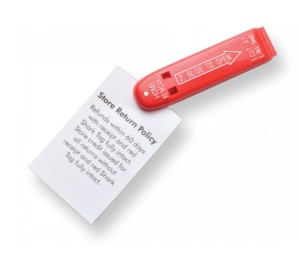 Employee theft according to the research done by many independent companies, is the number one reason stores across the country lose profits. A loss prevention team can help you address the issue and solve it, but most often than not, the theft that is happening in your store can go undetected for many months, or even years before your or your loss prevention team is aware of it. Training and educating your loss prevention team could save you thousand of dollars every year by making sure they attend workshops or seminars that keep them aware of the happenings of loss prevention every year.
Employee theft according to the research done by many independent companies, is the number one reason stores across the country lose profits. A loss prevention team can help you address the issue and solve it, but most often than not, the theft that is happening in your store can go undetected for many months, or even years before your or your loss prevention team is aware of it. Training and educating your loss prevention team could save you thousand of dollars every year by making sure they attend workshops or seminars that keep them aware of the happenings of loss prevention every year.
Follow the links below to read more about this topic.
U.S. retail workers are No. 1…in employee theft
Light-fingered employees cost American stores (and consumers) more than shoplifters do.
It’s almost Groundhog Day, but for retailers, the holiday season is finally winding down.
“The four months from October through January are when stores see not just their biggest sales volume of the year, but also the most returns and exchanges,” says Ernie Deyle, a 30-year veteran of the retail loss-prevention wars who leads the business consulting practice at London-based data analytics firm Sysrepublic. “Unfortunately, the same four months account for about half of all annual shrinkage.”
That shrinkage, made up of missing goods from shoplifting and other causes, costs U.S. retailers about $42 billion a year, according to the latest Global Retail Theft Barometer, an annual industry study led by Deyle and inventory management firm Checkpoint Systems.
What Wal-Mart U.S. Executives Learned By ‘Walking The Store’
I began my career in the grocery business as a bagger. During that time I observed that my boss, and sometimes his boss and some other senior executives, would “walk the store”. These walks provided the opportunity to perform visual inspections to see what was going right and wrong with the store. We all understood that we needed to be on our toes in case someone from headquarters decided to pull a surprise visit. This is exactly what the senior management of Wal-Mart (NYSE: WMT) U.S. recently did.
Eight months ago Greg Foran took over the U.S division of Wal-Mart, which has struggled with hit and miss same store sales ranging from -1.5% to positive 2.4% over the past five years. He and his team decided they were going to make it their top priority to understand the business under their charge and that included store visitations. On Apr. 1, they gave investors a strategic update indicating that Wal-Mart U. S. may be losing its grip in executing some basic common sense retailing principles. Let’s examine.
Empty shelves
One of my bosses in the grocery industry had a saying, “we sell groceries not real estate” in reference to empty shelves, with the underlying implication that shelves need to be full of merchandise so that customers can buy it. Customers aren’t interested in the air above empty shelves. Greg Foran noted some occurrences of empty shelves and full backrooms in some of the stores he visited:
Group steals bags of cash from D.M. stores, police say
A group of thieves distracted employees at four grocery stores over the weekend and stole bags of cash, including $10,000 from one business, police say.
Three females and a male would enter a store and pretend to buy items while distracting employees to another part of the business, security video shows. One of them would then steal from behind the counter or an office.
They robbed La Cruz 3 and El Palomino on East 14th Street and La Favorita on East Grand Avenue on Saturday. Saigon Market on Euclid Avenue was robbed Sunday morning, according to police reports.
“They seem to be targeting mom-and-pop type places. Businesses like QuikTrip and Kum & Go have rules about dropping off cash once they get to a certain amount,” said Sgt. Jason Halifax of Des Moines Police Department. “It may suggest the suspects had prior knowledge of how the businesses handle cash.”









